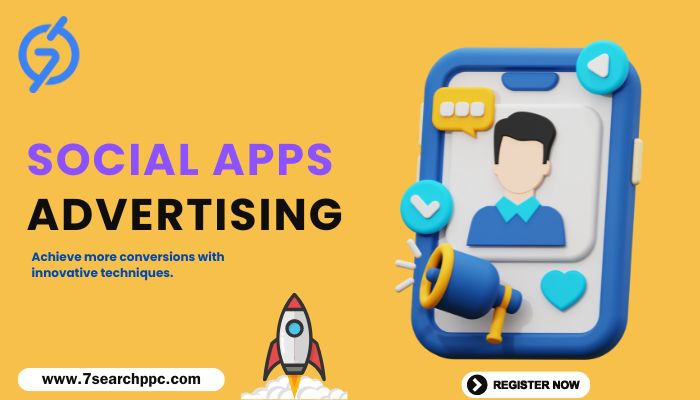In today’s digital landscape, advertising on social apps has become a vital part of any marketing strategy. With millions of active users on platforms like Facebook, Instagram, and TikTok, businesses are increasingly turning to social apps advertising platforms to reach their target audiences. This article delves into what a social apps advertising platform is, how it works, and its various features.
Understanding Social Apps Advertising Platforms
What is a Social Apps Advertising Platform?
A social apps advertising platform is a specialized digital marketplace that enables businesses to create, manage, and optimize advertising campaigns specifically designed for social media applications. These platforms provide tools and resources to help businesses reach users based on their interests, behaviors, and demographics, allowing for highly targeted and effective advertising.
Key Components of Social Apps Advertising Platforms
User Targeting
Targeting is at the core of any advertising platform. Advertisers can define their audience based on various parameters, such as age, gender, location, interests, and online behavior.
Ad Formats
Social apps advertising platforms offer various ad formats to engage users effectively. Common formats include:
- Native Ads: These ads blend seamlessly into the platform’s content, providing a non-intrusive user experience.
- Banner Ads: Static or animated images displayed at the top, bottom, or sides of a screen, designed to attract attention and drive traffic.
Performance Metrics
Advertisers can track the performance of their campaigns through various metrics such as impressions, clicks, and conversions. This data helps optimize future campaigns for better results.
Budget Management
Platforms provide tools for managing advertising budgets, allowing businesses to set daily or lifetime spending limits. They also offer different pricing models, including CPM (Cost Per Thousand Impressions) and PPC (Pay-Per-Click).
How Do Social Apps Advertising Platforms Work?
The Advertising Process
Account Setup
To get started, businesses must create an account on the advertising platform of their choice. This typically involves providing basic information, such as business name, contact details, and payment information.
Campaign Creation
Once the account is set up, advertisers can create a new campaign by following these steps:
- Define Objectives: Advertisers must decide on their campaign goals, such as increasing brand awareness, driving website traffic, or generating leads.
- Target Audience Selection: Using the platform’s targeting features, advertisers can specify the demographics and interests of their desired audience.
- Ad Format Selection: Depending on the campaign goals and target audience, businesses can choose from various ad formats, including native ads and banner ads.
Ad Design
Creating engaging ads is crucial for capturing users’ attention. Advertisers can use the platform’s creative tools or upload their own visuals and copy. Here are some best practices:
- Visual Appeal: Use high-quality images or videos to attract attention.
- Clear Messaging: Keep the ad copy concise and focused on the value proposition.
- Call to Action (CTA): Include a clear CTA to encourage users to take the desired action.
Budget and Bidding Strategy
Advertisers can set their budgets and choose a bidding strategy based on their campaign goals. CPM is often used for campaigns focused on brand awareness, while PPC is ideal for campaigns aimed at driving specific actions.
Campaign Launch and Monitoring
Once the ads are designed and the budget is set, the campaign can be launched. Advertisers can monitor performance in real-time through the platform’s analytics dashboard, allowing them to make data-driven adjustments to optimize results.
Types of Ads in Social Apps Advertising Platforms
Native Ads
Native ads are designed to match the look and feel of the platform on which they appear. Because they blend in with the content, users are more likely to engage with them. This format is particularly effective for storytelling and building brand affinity.
Banner Ads
Banner ads are visually striking and often placed in prominent positions within the app. They can be static or animated and are designed to catch the eye of users. While banner ads may not blend in like native ads, they can be effective for driving immediate clicks and conversions.
Benefits of Using Social Apps Advertising Platforms
Enhanced Targeting Capabilities
One of the primary advantages of using a social apps advertising platform is the ability to target specific user groups. This targeting can lead to higher engagement rates and more efficient use of advertising budgets.
Diverse Ad Formats
With various ad formats available, businesses can choose the type that best suits their goals. This flexibility allows for creative experimentation and the potential to discover what resonates most with their audience.
Real-Time Analytics
Social advertising offer real-time analytics, enabling advertisers to track campaign performance and make adjustments on the fly. This level of insight helps optimize ad spend and improve overall campaign effectiveness.
Cost-Effectiveness
Using models like CPM and PPC, advertisers can control costs and maximize ROI. These models allow businesses to pay only for actual engagement or impressions, ensuring they get value from their advertising spend.
Challenges in Social Apps Advertising
Competition for Attention
With numerous ads competing for users’ attention, standing out in the crowded social media space can be challenging. Advertisers must invest time and resources into creating compelling, high-quality content.
Ad Fatigue
Users may become overwhelmed by the number of ads they encounter, leading to ad fatigue. To combat this, advertisers should regularly refresh their creatives and test different formats.
Privacy Concerns
In recent years, privacy issues have taken center stage in the digital advertising landscape. Advertisers must navigate regulations like GDPR and CCPA to ensure compliance while still effectively targeting users.
Conclusion
In summary, a social apps advertising platform offers a powerful way for businesses to reach their target audience effectively. By leveraging advanced targeting capabilities, diverse ad formats, and real-time analytics, advertisers can create successful campaigns that not only promote their brand but also drive user engagement. Understanding how these platforms work and utilizing their features can significantly enhance marketing strategies and lead to higher returns on investment.
FAQs
What is a social apps advertising platform?
Ans. A social apps advertising platform is a digital marketplace that allows businesses to create, manage, and optimize advertising campaigns on social media applications.
How do social advertising platforms work?
Ans. These platforms allow advertisers to define their target audience, choose ad formats, set budgets, and monitor campaign performance through real-time analytics.
What are the main types of ads available?
Ans. The main types of ads available include native ads, which blend seamlessly with platform content, and banner ads, which are visually prominent and designed to attract immediate attention.
What are CPM and PPC?
Ans. CPM (Cost Per Thousand Impressions) is a pricing model that charges advertisers based on the number of times an ad is displayed, while PPC (Pay-Per-Click) charges based on the number of clicks an ad receives.
How can I optimize my ad campaigns?
Ans. To optimize ad campaigns, regularly monitor performance metrics, experiment with different ad formats, refresh creatives, and adjust targeting based on audience behavior and engagement.



